15 Best Substitutes for Garlic Salt
When you buy through our links, The Breslin may earn an affiliate commission. Learn more
An excellent garlic salt substitute might just be what you need to save the day! Let’s say you’re about to create your famous spice rub. But wait, you realize you’ve completely run out of the key ingredient in your kitchen!
In cases like this, it’s essential to keep in mind some of the best garlic salt stand-ins so that you can still treat your family and your guests to the best feast without any trouble.
The good news is, there’s a diversity of seasonings that can ultimately replace this seasoning in cooking recipes. In today’s guideline, I’m breaking down the characteristics of garlic salt and finding out what and how much you can use in place of it.
If you’re all set, put on your apron and let your journey take off!
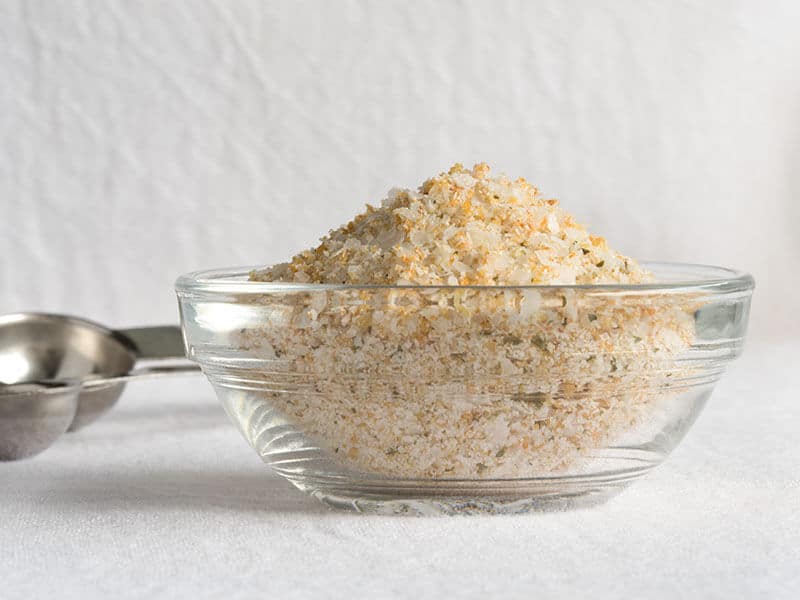
Everything You Need To Know About Garlic Salt
Garlic salt is an amazing flavor enhancer that many cooks have in their spice cabinets. Let’s begin by discussing what’s in your shaker of garlic salt and what it’s good for.
What Is Garlic Salt Anyway?
Garlic salt’s name gives clues about what it’s made of. Essentially, it’s a combination of table salt, garlic powder, and an anti-caking agent to prevent the mixture from clumping together.
At its most basic, garlic salt is roughly three parts salt to one part ground garlic by volume or six-part salt to one part garlic powder by weight.
Thanks to the anti-caking agent, which is typically calcium silicate, the seasoning has a fluffy, powdery, and fine texture that’s shakable. Flavor-wise, it’s salty as well as garlicky, but the saltiness tends to be much stronger.
In other words, garlic salt is simply a variant of table salt with an aroma and a kick of garlic. So if your dish requires some salty and garlicky taste simultaneously, garlic salt indeed comes in handy.
Garlic Salt Vs. Garlic Powder
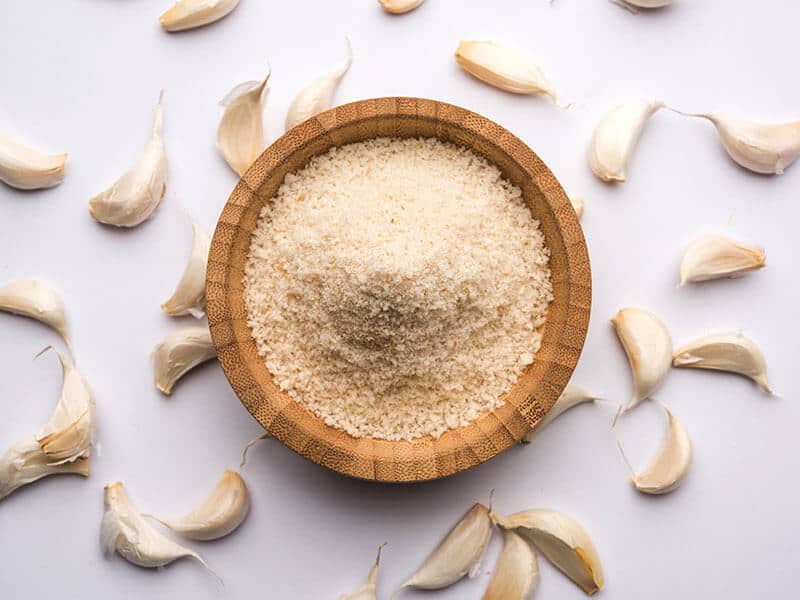
In many recipes, garlic salt and garlic powder can be used interchangeably. However, these seasonings aren’t the same thing.
Quite obviously, garlic powder is an ingredient in the making of garlic salt. Garlic powder is dried and finely ground garlic, offering a similar flavor and fragrance to fresh garlic. In contrast, garlic salt is more like a seasoning that’s salty with a garlicky kick.
Garlic powder is more versatile since you can use it in a needed ratio to get the desired flavor. Whereas with garlic salt, putting too much may cause excess sodium levels in your dishes, not to mention the overbearing salty flavor.
Why Should You Substitute Garlic Salt?
Garlic salt is one of the most convenient seasonings for adding flavors to your recipe, which is a given. However, there’re several scenarios where garlic salt replacements will come to the rescue.
1. Garlic Allergy
One of the most crucial ingredients in all cooking arts, garlic is a staple in most well-stocked kitchens. Though very rare, garlic allergy can still be dangerous to your body (1) . Therefore, if you have a garlic allergy, it’s crucial to leave out garlic salt and opt for another seasoning.
2. High Sodium Content
As with other seasonings with “salt” in their names, garlic salt has a high sodium content. Sodium can potentially raise your blood pressure when consumed in excess, even for folks who haven’t had a problem. Switch to other spices if you’re sticking to a healthier low-sodium diet.
3. Garlic’s Flavor
While milder than fresh garlic cloves, garlic salt still gives off that pungent, slightly spicy taste that many folks seem to detest. In this case, garlic salt might not be the best seasoning for your cooking.
Best Garlic Salt Substitute Conversion Chart
Find out what’s best for your recipes and the perfect ratio for a seamless garlic salt substitution. Your recipes will thank you later!
What Can I Use Instead Of Garlic Salt?
It’s time to answer your big question! Here are the best garlic salt alternatives that you may find useful. Remember that what to use largely depends on the specific recipe, so spend time experimenting with multiple replacements if you’ve got time.
1. Garlic Powder And Salt
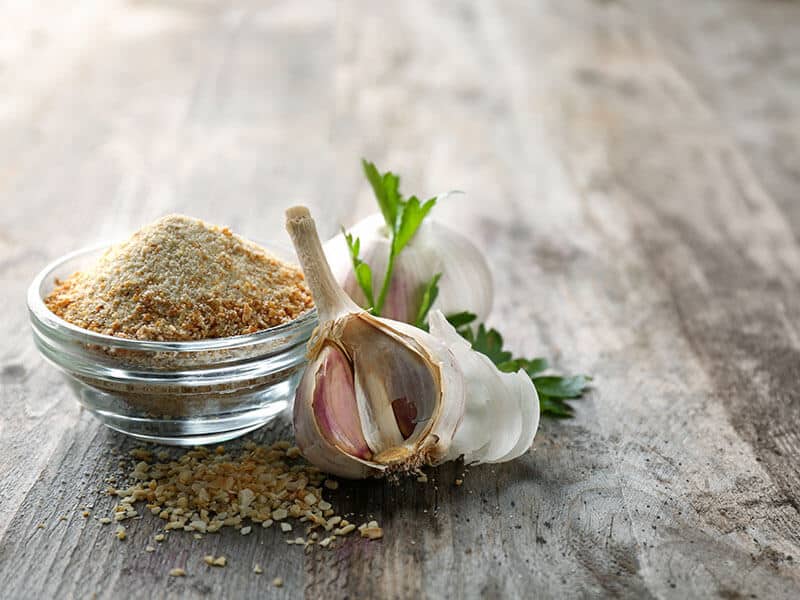
Garlic powder and salt are hands-down the best stand-in combo for garlic salt. It’s super easy to use and versatile in a variety of recipes. Plus, garlic powder is something most home cooks store in their spice cabinets.
Essentially, garlic powder is the dried and ground version of the fresh garlic bulb. This condiment tends to have the most concentrated garlic flavor of all garlic product varieties, thanks to the small granule size.
When you want that garlicky kick without the visible garlic on your plate, garlic powder is your best bet. The fine consistency allows it to disintegrate quickly in a recipe, leaving behind a subtle fullness and pungent flavor without overpowering other elements.
One of the most wonderful things about using garlic powder in place of garlic salt is that you control the sodium level. I recommend seasoning your food with salt first, then using a light hand of garlic powder and tasting as you go.
This versatile mixture works in any recipe that you would use garlic salt. That includes things like stews, soups, salad dressings, marinades, and rubs.
In most cases, the ideal ratio for substituting garlic salt is 3:1 of salt to garlic powder. For example, combine 3 tablespoons of salt and 1 tablespoon of garlic powder to use in place of 4 tablespoons of garlic salt.
Or else, 1 cup of garlic salt can be replaced by ¾ cup of salt mixed with ¼ cup of garlic powder. But you can always adjust these ingredients by adding more to less of each as your heart desires.
2. Garlic Flakes And Salt
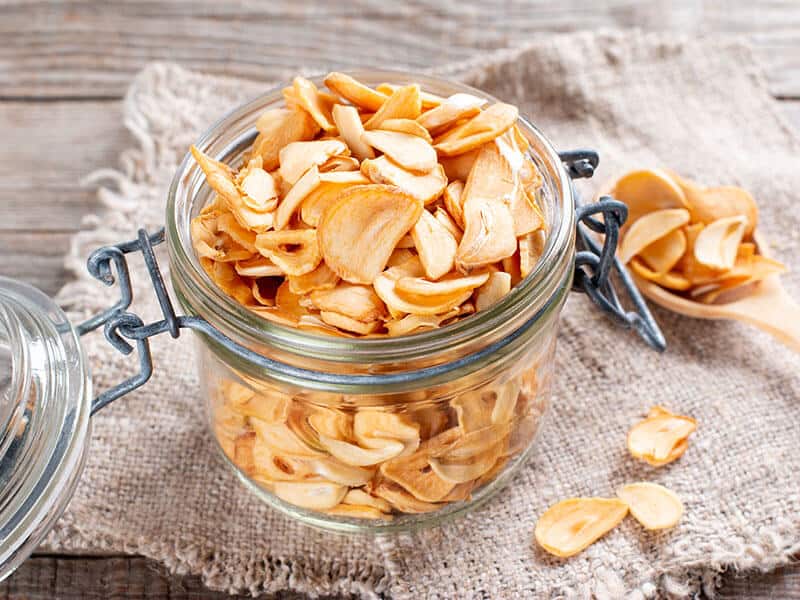
The difference that sets garlic flakes and garlic powder apart is the granule size. Unlike their counterpart, garlic flakes consist of small and dehydrated pieces of minced garlic. Its coarse texture resembles that of cornmeal.
Flavor-wise, garlic flakes give off a strong, full taste that goes beautifully with dishes that undergo a long cooking time. For instance, pastry, fish, meatloaves, and casseroles are the best recipes to use garlic flakes.
Store-bought garlic flakes are so convenient, especially if you’re a busy cook. With no peeling or processing needed at home, it’s perfect for creating that rich garlicky flavor without overpowering other flavors on your dish.
Ideally, one teaspoon of garlic salt equals one teaspoon of garlic flakes and ¾ teaspoon of salt. Remember that you can always adjust the salt level to suit your taste preference and your diet needs.
If you have only garlic flakes on hand, you can double the amount of the flakes compared to the original amount of garlic salt the recipes require.
3. Garlic Oil And Salt
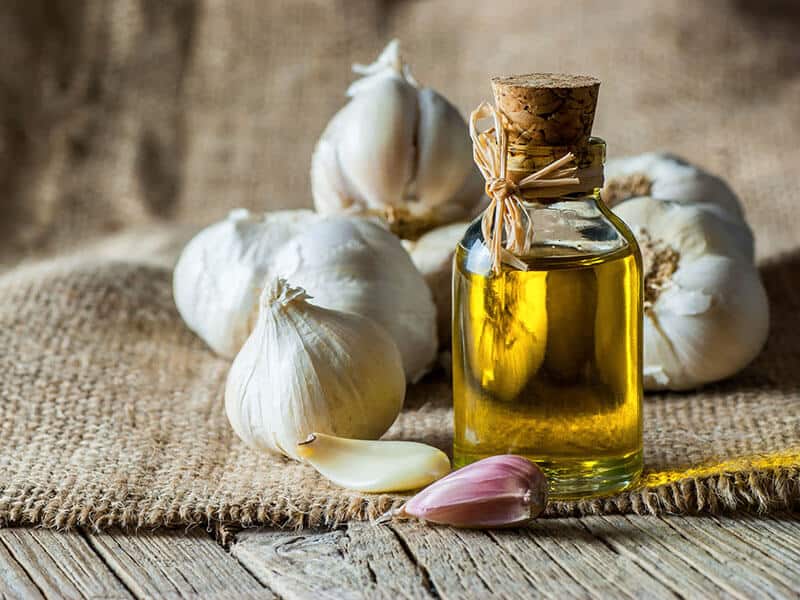
A delicate way to add subtle garlic flavor to your favorite dishes, garlic oil pairs up with salt to make a wonderful garlic salt stand-in. Conventional store-bought garlic oil is often made of olive oil, garlic, and a conservative that makes it shelf-stable.
If you dislike the overly pungent taste of garlic in your recipes, garlic oil is surely your go-to. On its own, it tastes like bitter burnt garlic, as you would expect.
But the real magic happens as it’s drizzled into your ramen, broth, and salad dressing. Garlic oil adds an earthy, smoky, and incredibly rich flavor to almost anything you’re cooking.
The only issue is that salt particles don’t dissolve well into oil. But it’s not a big problem in most recipes. To create the base of a salad dressing, you can use hot garlic oil for better blending.
You can create the substitute by mixing garlic oil with salt according to 2:⅔ or 1: ¾ ratio. Garlic oil can be substituted for garlic salt for an equal amount.
If you want that fragrant, punchy oil for daily meals, the good news is, homemade garlic oil is anything but difficult. All you need is some cloves of chopped garlic and a reasonably mild olive oil or canola oil if you prefer. This DIY oil is stored in the fridge for up to a week.
4. Garlic Juice And Salt
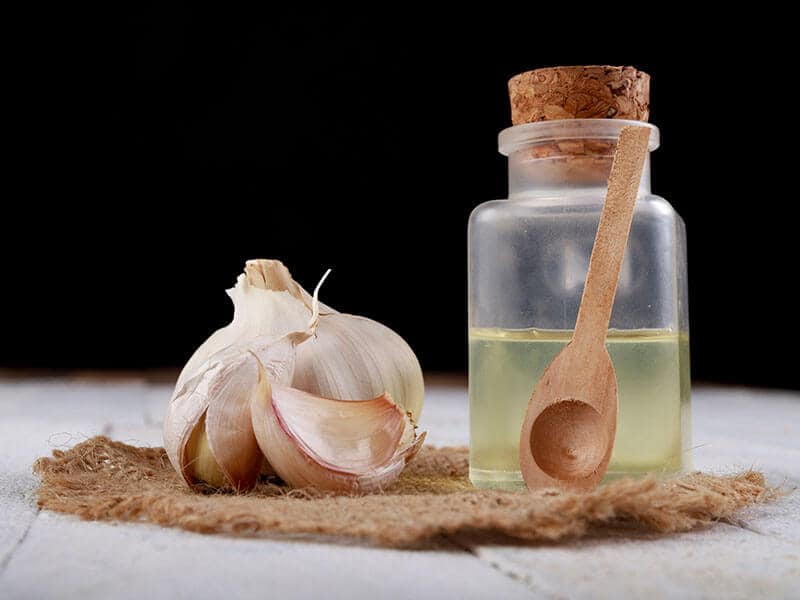
In essence, garlic juice is the pureed form of fresh garlic, sold as juices and extracts. It’s made by pressing garlic and then straining the juice. Thus, homemade garlic juice is an easy recipe that takes little time to come together.
Flavor-wise, garlic juice offers the same garlicky hint. Initially, it gives off strong waves of coriander, pine, and cloves. Then comes a fruity and candy-like appeal. On its own, it has an intense flavor.
Generally, garlic juice tends to be less pungent and sharp than garlic salt. For substitution, one teaspoon of garlic salt can be replaced with two teaspoons of garlic juice and ¼ teaspoon of salt.
Another way to get your mixture to taste and smell like regular garlic salt is to combine two parts garlic juice with three parts salt. The choice is yours!
Adding a drizzle of garlic juice and a dash of salt helps bring out that umami and depth to soups, stews, and any broth that’s simmering on the stove.
But that’s not all the reason to use garlic juice in cooking. This ingredient is praised for tons of health benefits, such as fending off seasonal ailments, treating cough, and detoxing your body, which is why many folks dilute it in water for a morning beverage.
5. Fresh Garlic
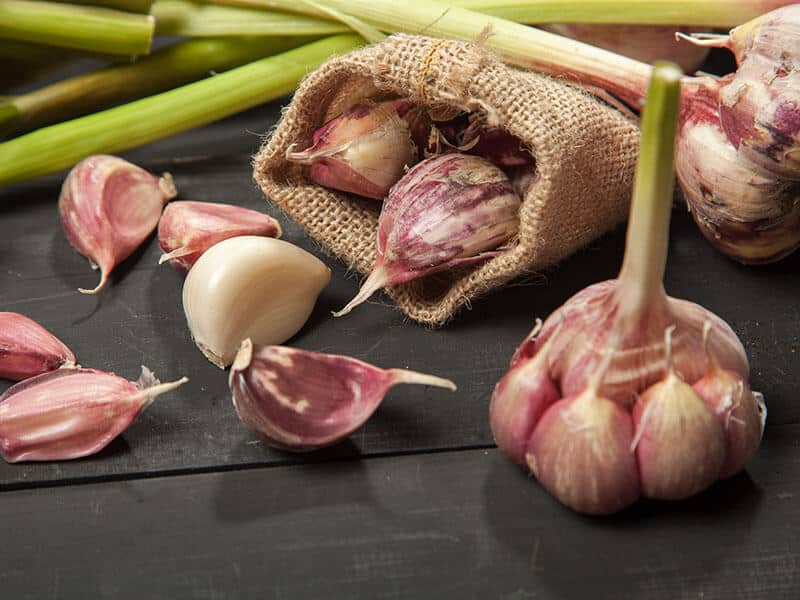
Perhaps one of the most widely used seasonings for home cooking, fresh garlic is a safe backup option when garlic salt isn’t at your disposal. Unless you prefer garlic with less flavor and sharpness, fresh garlic is always on the better side.
Simply peel, chop up some pieces of garlic, blend it in with salt, and mash until the desired consistency is achieved. Or else, you can also add these two ingredients separately, depending on what the recipe calls for.
The taste of fresh garlic comes across as spicy, pungent, and earthy that sweetens up and mellows out as it cooks. As it’s likely stronger than garlic salt, a little bit of fresh garlic goes a long way. Keep tasting as you cook, so you don’t overdo the garlicky flavor.
You can pretty much use fresh garlic and salt to match the taste of garlic salt in lots of situations, be it stir-fries, stews, or soup preparations. The rule of thumb for cooking raw garlic is to use low, gentle heat and pay attention to the stove.
For the best flavors, use one clove of garlic to replace ½ teaspoon of garlic salt. Since fresh garlic lacks saltiness, a good tip is to increase the amount of salt in your recipes accordingly.
6. Granulated Garlic And Salt
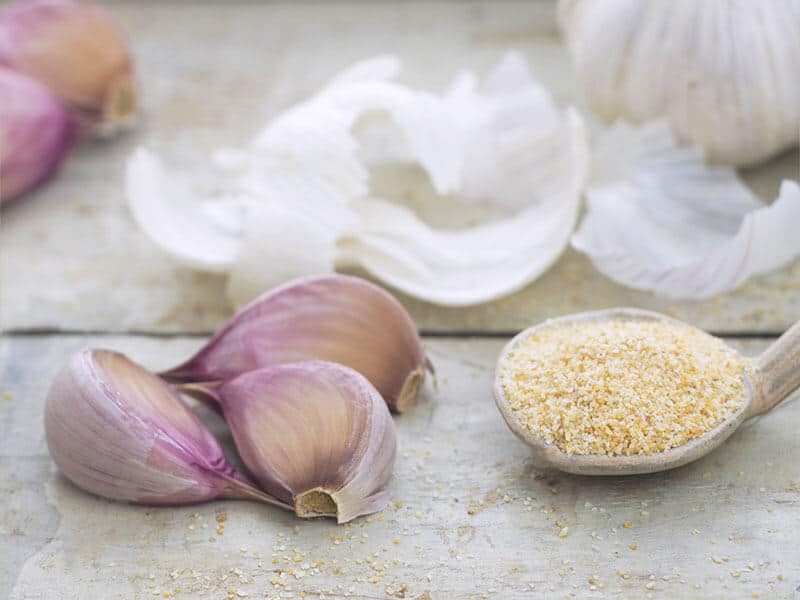
Granulated garlic might just be what you need when it comes to liquid-based dishes such as soups, sauces, and stews. Texture-wise, it’s finer than garlic flakes yet much chunkier, rougher than garlic powder.
There’re good reasons why granulated garlic is a popular item in the spice aisle of most grocery stores. It dissolves quickly into your broth, lending a potent and savory flavor without watering it out.
To provide a similar flavor profile as one teaspoon of garlic salt, it’s recommended that you combine ½ teaspoon of granulated garlic and ¾ teaspoon of salt.
If you don’t have a jar of granulated garlic in your spice rack, making a DIY batch is quite a breeze. Quite similar to making garlic powder, you’ll need to peel and dry the garlic in the sun or the oven until dry and crispy, then give it a whirl in the food processor.
From whipping up salad dressings to combining a spice rub, granulated garlic is just the ticket. Its coarse, cornmeal-like texture mixes well with other seasonings and is less likely to clump in recipes.
7. Garlic Sauce
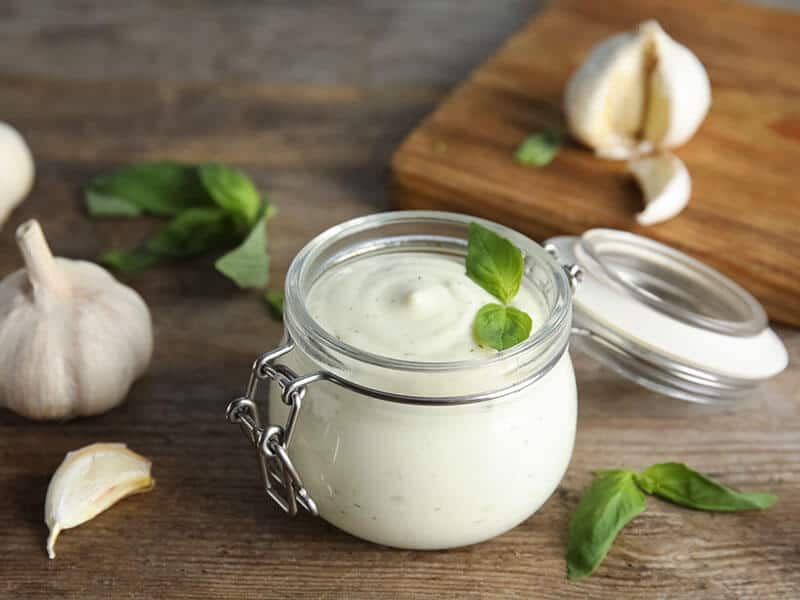
As you may have guessed, garlic sauce is a thick, creamy sauce used as a flavorful kick on many tasty recipes. If you haven’t tried this magical yet super-simple sauce, you’re missing out.
The use of garlic sauce goes way beyond a condiment. You can serve it as a sauce with grilled meat, warm pita, and even a shortcut ingredient to recipes like pasta. With no mayo included, it’s a much healthier alternative to enjoy your favorite dishes.
A drizzle of garlic sauce perfectly complements liquid dishes such as soups and stews. However, if you’re baking some goods, you should look at other alternative options.
While homemade garlic sauce does require a little know-how, the procedure uses just four simple ingredients: garlic cloves, salt, oil, and lemon juice. Grab your blender, and you’re 15 minutes away from the most delicious garlic sauce.
When you’re taking a trip to the supermarket, head to the sauce, canned vegetable, or condiment aisle to find garlic sauce. If you don’t find it in these areas, the last place to check is the spice aisle.
There’s no need to toss in extra salt, as most garlic sauces are already pretty salty. Also, when substituting it for garlic salt, you should be sure to check the salt content on its label to determine how much to use in your recipe.
9. Minced Garlic And Salt
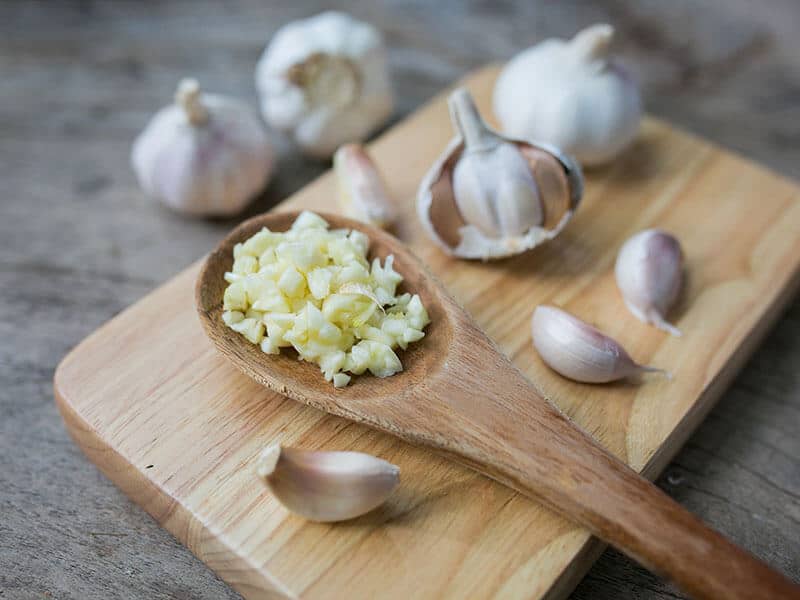
For folks wondering if minced garlic tastes like its fresh counterpart, the answer is no. Typically, minced garlic is stronger and more pungent on the flavor due to its production process.
No doubt, jarred minced garlic is convenient, as there’s no peeling or chopping required. Pop the lid, scoop a bit out, and throw it into your braise, broth, or sauté.
On the flip side, as the garlic hangs out, it gradually loses its potency and spicy, assertive flavor. Plus, it can have a bit of an unpleasant aroma on your dish, which some people don’t prefer. If this is your case, take a quick look at other substitutions.
Minced garlic is the right choice if you need a slight hit of garlic and don’t have any garlic salt on hand. In the absence of garlic salt, one teaspoon of minced garlic with ¾ teaspoon of salt is most likely to match its flavor.
Or else, ½ teaspoon of garlic salt can also be replaced by mixing ½ teaspoon of minced garlic and ¼ teaspoon of salt. Both of these substitutions are perfect for use in savory recipes and baked goods.
If you’re making minced garlic from scratch, 1 teaspoon of garlic salt can be replaced by ¾ teaspoon of salt with 2 cloves of minced garlic. Try 2¼ teaspoons of salt with 6 cloves of minced garlic in place of 1 tablespoon of garlic salt for extra flavor and intenseness.
It’s essential to notice that most supermarket minced garlic features salt, so you might not have to add any more. This mix is super versatile; you can use it when cooking anything you want.
10. Onion Powder
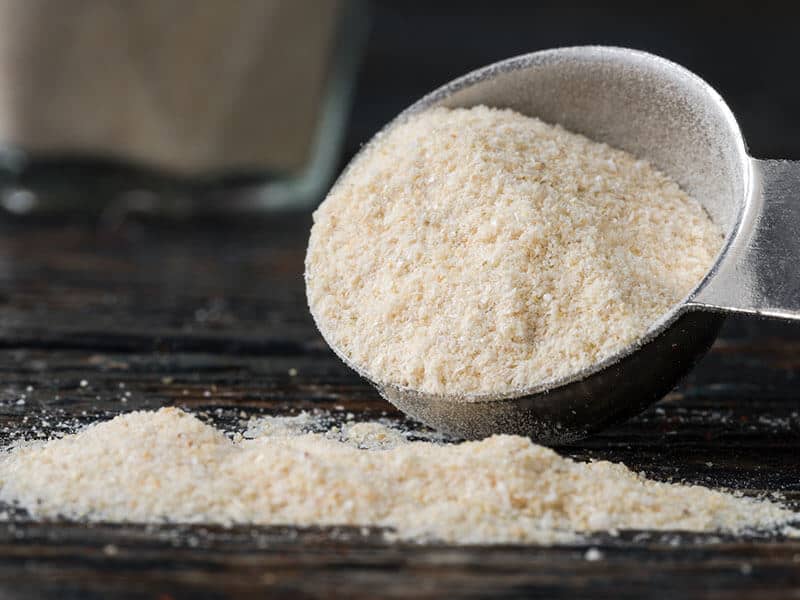
Onion powder is a brilliant way to lend your recipe that sweet, pungent, and savory flavor. Though it may be a different experience, onion powder can step in as a life-saving condiment for certain dishes when garlic salt is not around.
Since onion powder carries a hint of garlic, it can be sprinkled into all kinds of dishes. Use it as a base for marinades, rubs, or perk up your salad dressings and casseroles. It’s no secret that onion powder is incredibly useful in your kitchen.
For the best results, use an equal amount of onion powder to replace garlic salt in recipes. The powdered form allows it to blend completely, creating a smooth overall texture.
Not only add savory richness to your meals, but onion powder is also beneficial in terms of health concerns, as it’s rich in various antioxidants and vitamins. (2) A holistic remedy that’s been around for ages, onion powder is super effective for treating colds and flu.
Many store-bought onion powders are merely dry ground onions, while others contain a good amount of sodium. This way, a bit of salt can be added to the mix to suit your liking.
With or without a dehydrator, making onion powder from scratch doesn’t have to be a hassle!
11. Flavored Garlic Paste And Salt
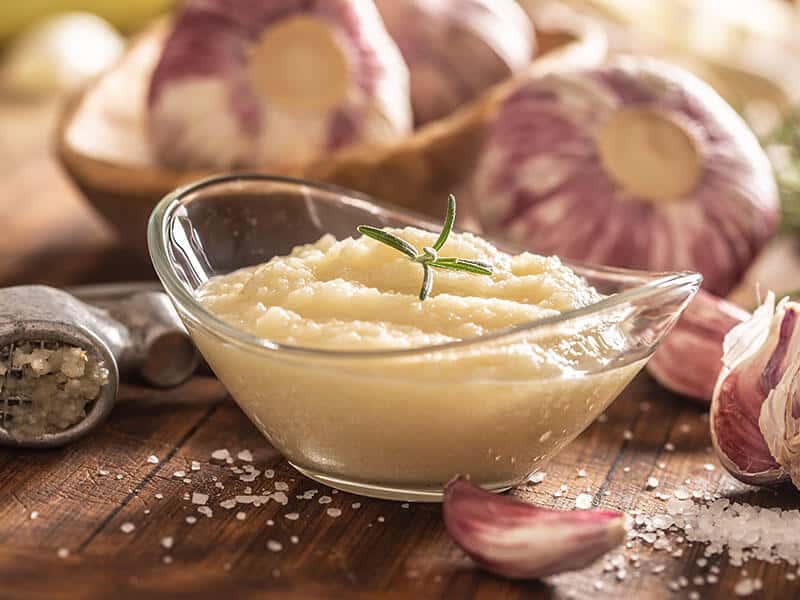
Garlic paste is just as it sounds. It’s a mellow mixture of three ingredients: garlic, salt, and oil. It’s mostly available in squeezable tubes. The flavor mellows out as it cooks, so if you crave that deep, pungent punch, the golden trick is to add it at the end of cooking.
Strong, intense, and garlicky, it perfectly captures the fresh garlic flavor that you’d expect squeezing a clove. A touch of garlic paste goes well in dishes where you want that garlicky flavor to shine through.
The good news is, it takes minutes to mix up a batch of your fresh garlic paste. Most of the work goes into peeling the garlic cloves. Then, you can blend it up with a blender or a food processor before using it right away.
Supermarket or homemade, garlic paste will work in any recipe that calls for garlic salt. It lends a savory taste to sauces, dressings, marinades, and tons of other dishes that are only limited by your imagination.
Ideally, it’s best to replace garlic paste or garlic salt in a 1:1 ratio. Also, keep in mind that garlic paste already has salt in it so that you don’t mess the entire dish up by sprinkling some more on top.
12. Garlic Mixes
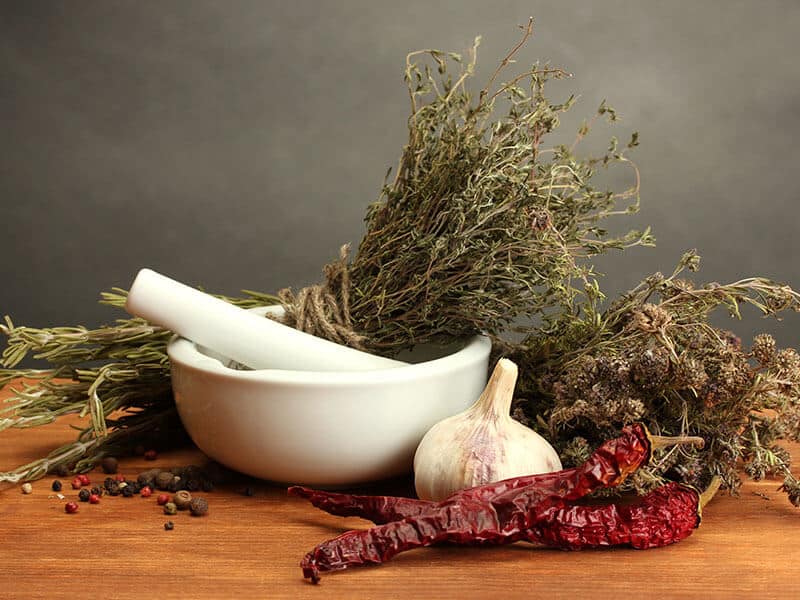
More often than not, you’ll find various types of garlic mixes walking down the spice aisle. These garlic mixes mostly feature garlic as the main ingredient and other added spices such as dried herbs and peppers.
In terms of flavor, these mixes yield different signature punches, but the main flavors are often sweet, garlicky, deep, and relatively pungent. When choosing the variety for your dishes, make sure to go through the flavor profile to decide if it suits your fancy.
The truth is, garlic mixes are a very convenient condiment to have on hand. All the washing, peeling, and chopping of ingredients are done before the actual cooking begins, thus reducing your work in the kitchen.
A golden tip is to taste the mix before tossing it into the pot gradually. If it perfectly suits your recipe, there’s no need to adjust the ingredient ratio by adding any salt or garlic. Make sure to go lightly and regulate the ingredients if you desire.
13. Mustard Powder
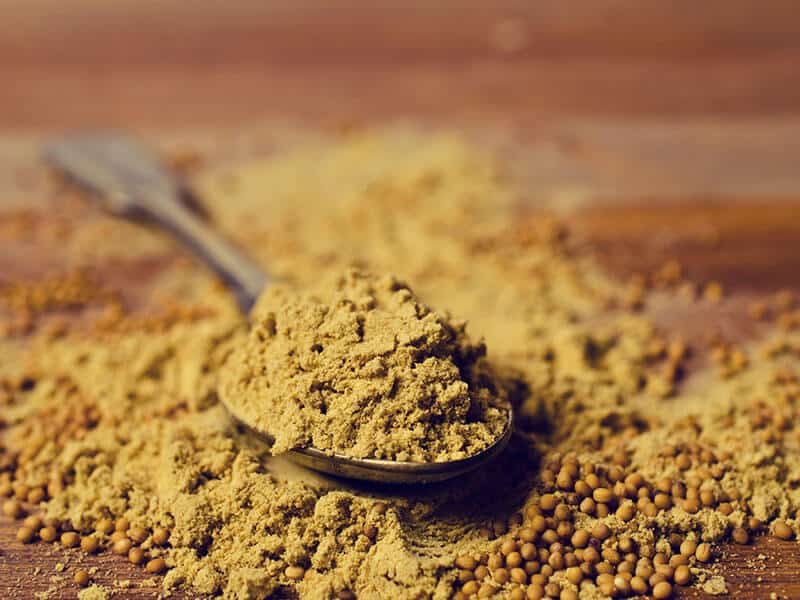
Odd as it sounds, I promise it works! It also goes by dry mustard or ground mustard; the mustard powder is essentially ground mustard seeds. When used in place of garlic salt, it adds some decadence to your indulgent weeknight meal.
By itself, the mustard powder is merely tasteless. The magic happens when you stir it into water. It offers a sharp flavor, a tangy burst of acidity, and a clean, pleasant aroma that’s much similar to garlic salt.
One thing that separates these two ingredients is that dry mustard tends to be on the hotter, more pungent side. It also leaves quite a spicy aftertaste, which you should take into account.
The condiment creates the perfect counterpoint to rich elements like butter, cheese, and beef. Some folks love mustard powder in their salad dressings and hot dogs, while others prefer it as the base for dry rubs and sauces.
Especially with its pale, yellow-gray color, ground mustard is a match made in heaven with creamy dishes. Not only lending the recipe a bold, rich flavor, but it also elevates the appealing color. Win-win!
Why let that jar of dry mustard waste away in the back of your spice cabinet when it saves the day? Take half a teaspoon of mustard powder to substitute every teaspoon of garlic salt, and you’re good to go.
14. Spice Mixes
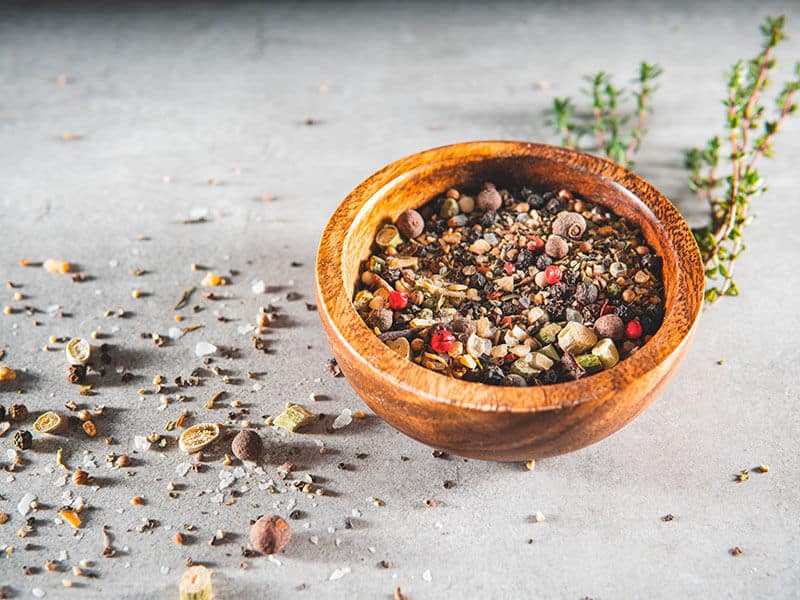
Garlic salt has its perks. But better still, adventurous cooks can liven up their meals with a diversity of spice mixes. Somewhere along the way, you may even find your new favorite condiment.
Spice mixes are pre-made mixes of herbs and spices in dry form. While you can find tons of spice mixes for each cooking style, I recommend using a blend that features garlic as one of its main elements to make up for that lost flavor of garlic salt.
For instance, garlic pepper, garlic parmesan, and all-purpose garlic seasoning are some of the most widely used varieties in the kitchen. Take a trip to the supermarket, and the options there are endless!
Some blends add sweet heat to slow-cooked recipes such as soups, casseroles, and braises, whereas others give off a soft, delicate garlic flavor. It’s crucial to ensure that the mix enhances your recipe by going through the label beforehand and adding it slowly to your dishes.
There’s a diversity of spice blends. Each gives a different kind of flavor and is required to use in a separate way. From chili powder to taco seasoning and pumpkin spice, you should make sure the blend suits your dish’s flavor profile before use.
15. Homemade Garlic Salt
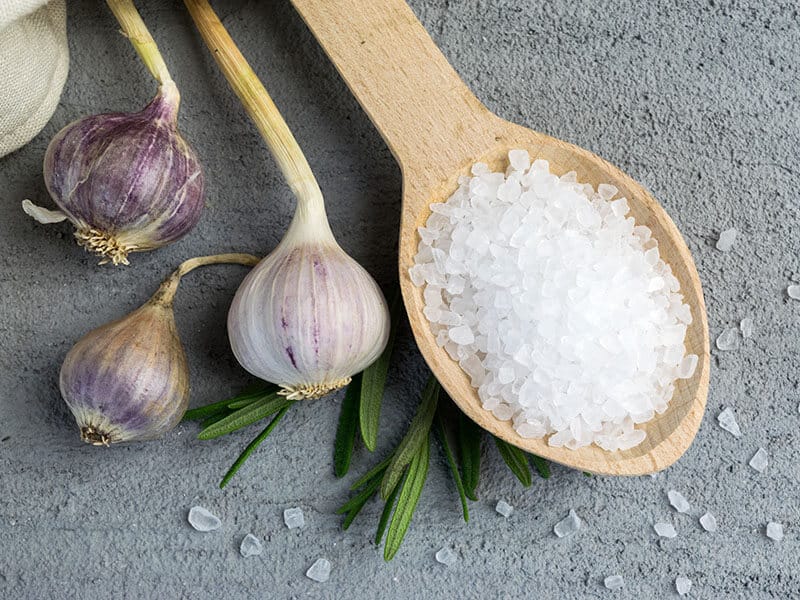
I’ll let you in on a secret. Garlic salt can be made from scratch in minutes. What’s more, the process is fun and simple, with only two ingredients required: plain garlic and salt.
Whether you grow your garlic or happen to have a few cloves around, you can use them to make your shelf-stable garlic salt. All you need to do is take ½ cup of garlic cloves (roughly four bulbs), 1 cup of salt and give them a quick whirl.
Then, dry the mixture until it feels dry to the touch. Finally, pulse it in a clean food processor, and store your garlic salt in an air-tight container for later use.
This is how to make your garlic salt from fresh garlic!
Crowd-Pleasing Recipes With Garlic Salt And Substitutes
Say yes to an easy, fancy weeknight dinner! Garlic salt and its substitutes can bring your recipes up a notch with its sweet, spicy, and pungent kick. Here are five recipes by which you can make use of these condiments in home cooking.
1. Garlic Butter Chicken
A full-flavored recipe that rivals any restaurant, garlic butter chicken is one way to bring your mealtimes up a notch. Garlic and butter are the perfect combination of flavors to create that delicious coating for seared chicken.
Spicy, buttery, and creamy, this dish is the full package for an indulgent lunch or dinner. You can enjoy it with a nice, comforting side for chicken, pasta, or green salad. With this recipe, dinner should be on the table in no time.
2. Garlic Bread
There’s a thing that anyone can agree on: garlic bread. The best-kept secret to out-of-this-world garlic bread is to keep it simple. Garlic, butter, and often some parmesan are enough to give your bread the best flavors ever.
Soft and crispy, garlic bread is best relished fresh out of the oven. This timeless recipe is the perfect side for anything. But with some marinara alone, it’s the most addictive snack that you can’t get enough of.
Here are three ways to achieve restaurant-style garlic bread in a pinch!
3. Garlic Shrimp Spaghetti
Ready in 20 minutes, garlic shrimp spaghetti, is a comforting meal for those busy weeknights. Garlicky, flavorful prawns sit on a bed of spaghetti and vegetables. Don’t be shy to garnish it with some parsley if it’s your thing.
How does that not sound like heaven? With all elements, it’s packed with health benefits without skimping on the flavor. If shrimp is not your thing, simply replace it with other kinds of protein such as salmon or chicken.
If you love a spicy kick to this recipe, here’s how to execute it in your kitchen!
4. Honey Garlic Meatballs
Garlic and honey team up to create a zesty, sweet flavor that makes every meatball the star of the show. Lean ground pork seems to be the best option, but you can spice it up with beef and turkey too.
Each bite is so tender and juicy with the perfect balance of flavors. These meatballs are so good that everyone wants to try them over and over again. You can also make a batch and use the leftover meatballs for some outstanding recipes later.
5. Stir-Fry Spinach With Garlic
Spinach is quite the perfect base for this timeless Chinese side dish. Sweet and tender spinach pairs with flavorful, pungent garlic that fills your kitchen with a crazy aroma in minutes.
While the recipe calls for 1 tsp of minced garlic, don’t be shy to add more if you desire that intense garlicky taste. This stir-fried spinach is an excellent accompaniment for almost any meaty main course.
FAQs
Are you having doubts about garlic salt and its substitutes as above? No worries, I got you. I’ve gathered the most asked questions regarding the topic, so you can have a better idea of cooking with these ingredients.
Are You Satisfied With These Garlic Salt Substitutes?
It’s been a great pleasure taking you through some of the best alternatives for garlic salt. All in all, you can always find a new solution to save your recipe, either in your spice rack or at the grocery store.
On an important note, if there’s time to spare, give your mix some experiment to figure out the one that suits your taste buds. Some of these stand-ins already consist of salt, whereas others don’t. So make sure to check its label before tossing them into your pot.
Have you found your favorite substitute for garlic salt yet? Also, don’t be shy to let your friends and loved ones on your culinary journey by sharing this post online!
References
- Centers, N.,. Garlic Allergy | NY Allergy & Sinus Centers.
- fdc.nal.usda.gov.

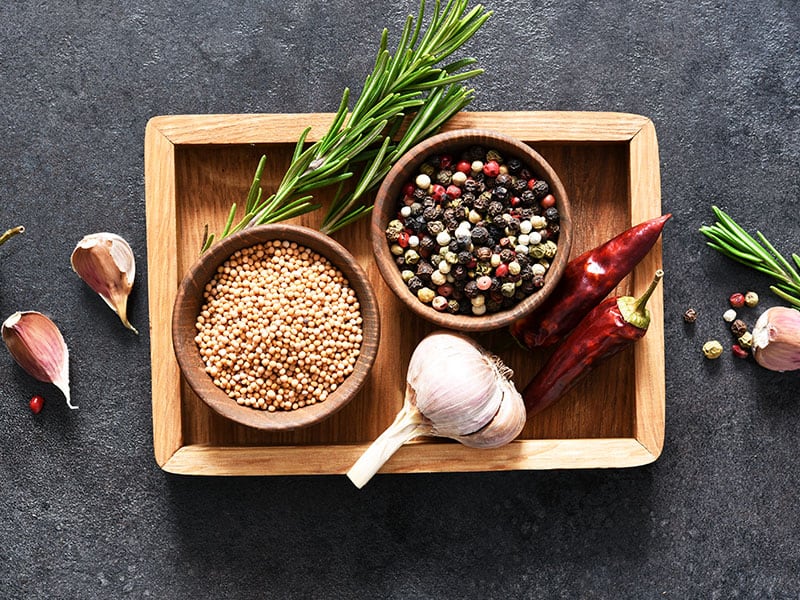
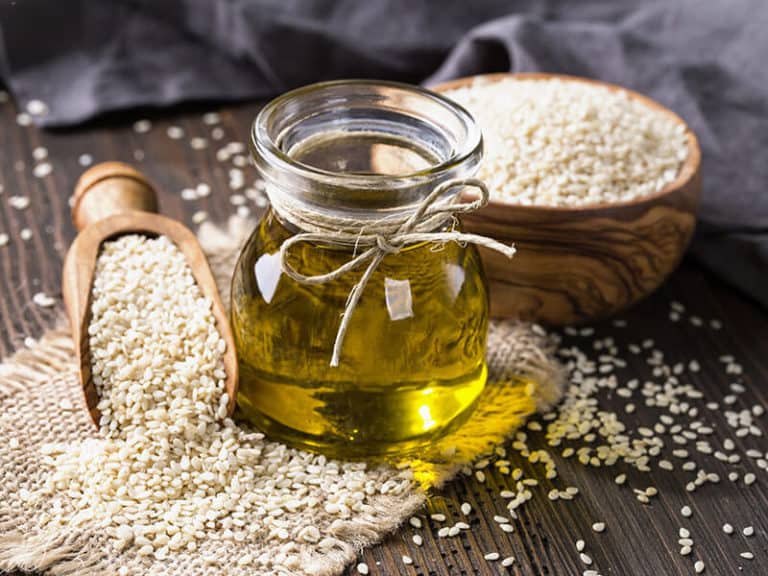
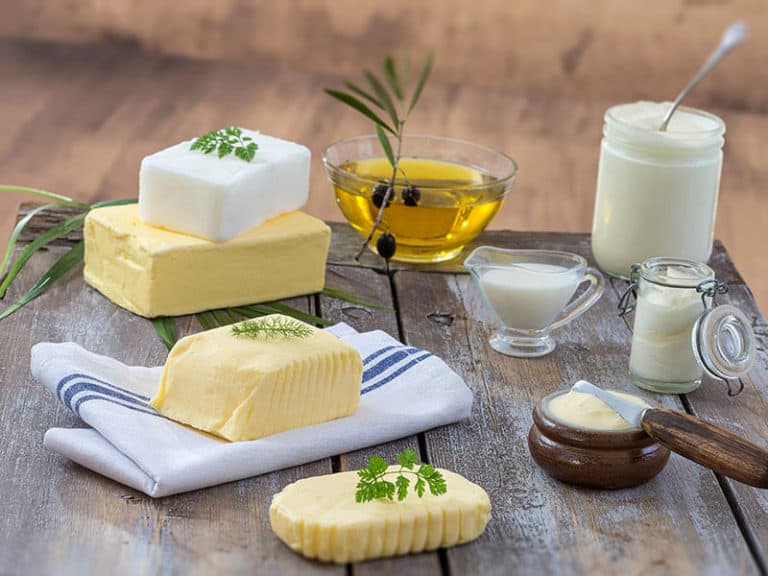
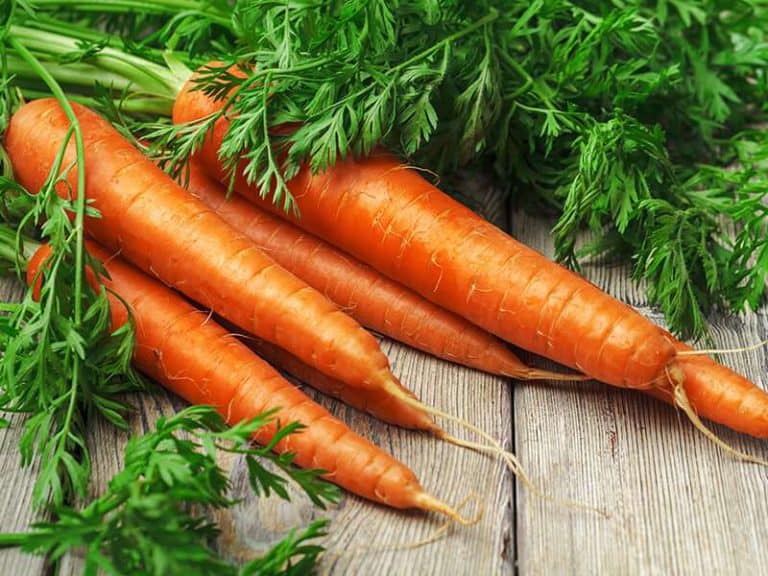
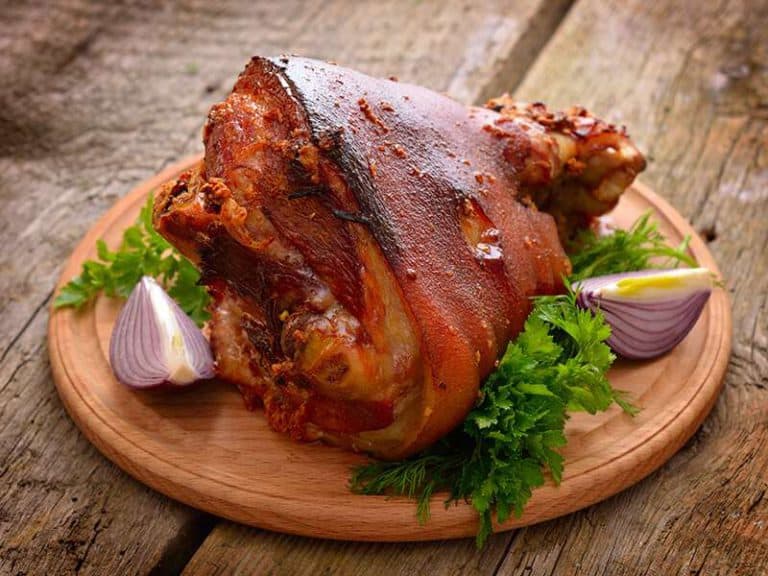
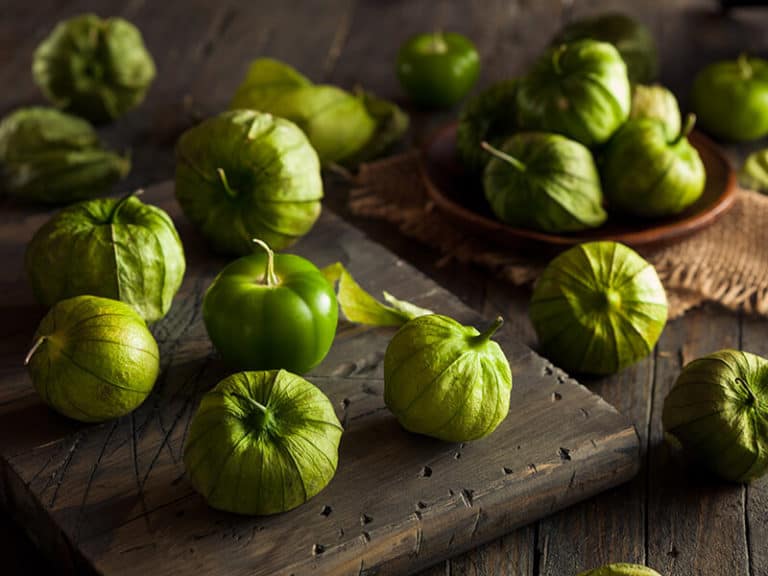
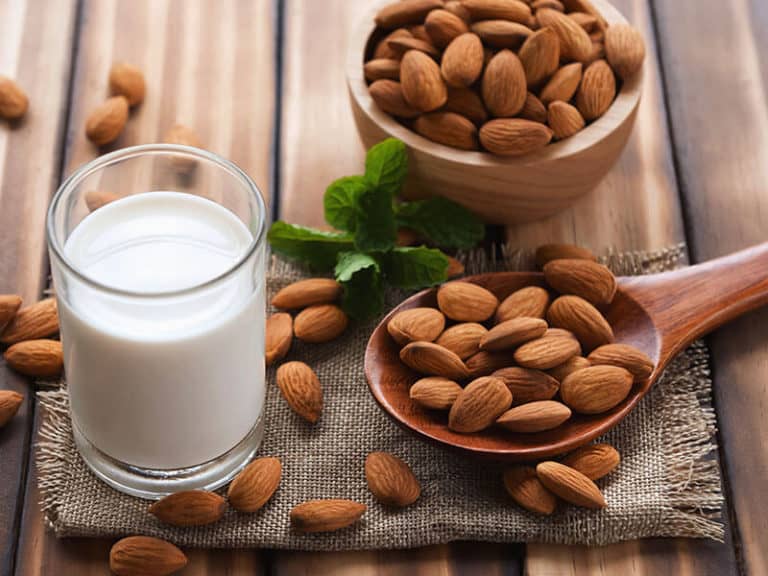
Amanda Collins
Founder and Senior Culinary Editor
Expertise
Culinary Arts and Management, Food Journalism and Critique, Recipe Development and Testing, Global Culinary Traditions, Sustainable Food Practices
Education
Institute of Culinary Education (ICE), New York, NY
Program: Diploma in Culinary Arts
Focus: Intensive hands-on training in culinary techniques, recipe development, and kitchen management, preparing students for professional roles in the culinary industry.
Monroe College, New Rochelle, NY
Program: Associate in Applied Science in Culinary Arts
Focus: Practical culinary skills, including cooking techniques, menu planning, and kitchen operations, with an emphasis on hands-on experience and industry standards.
Amanda Collins is a seasoned chef and food editor with a deep love for global flavors. Trained at the Institute of Culinary Education and Monroe College, and with over 15 years in the culinary field, Amanda has refined her skills in kitchens worldwide. Her background in food studies gives her a unique ability to share both recipes and the cultural stories that shape them.
As senior culinary editor at thebreslin.com, Amanda’s work brings authentic dishes to life, inviting readers to explore new flavors and techniques from around the globe. Her approachable style makes it easy for anyone to bring a bit of the world’s cuisine into their kitchen.